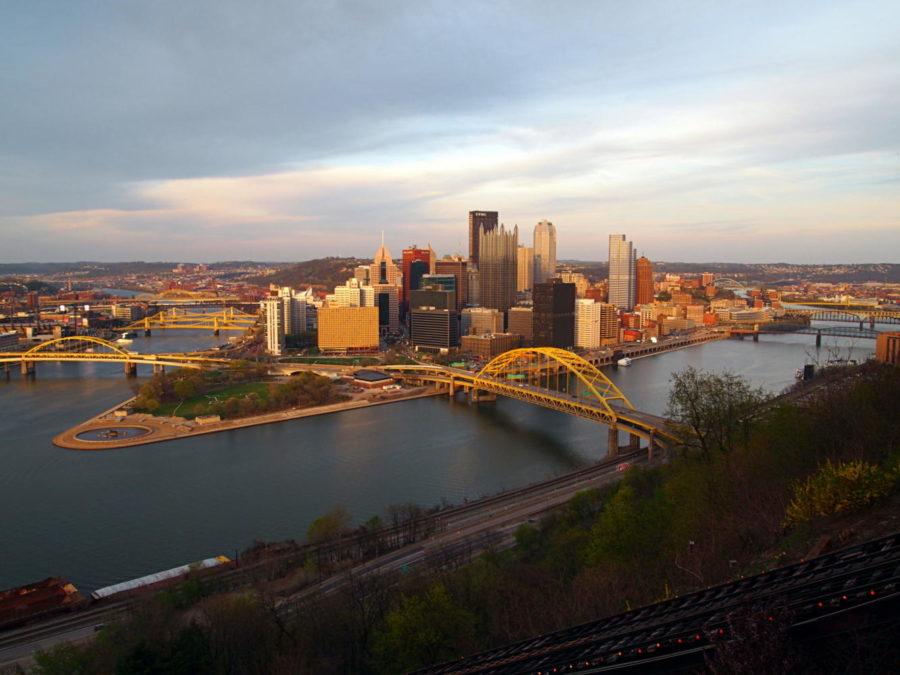A Pittsburgh skyline dominated by smokestacks once denoted the bane of environmental destruction to some — but to many, it was a livelihood.
More than ever before, Pittsburgh is shedding its long-standing status as the “Steel City” as it continues to transition from a City that is economically reliant on fossil fuels toward a City with more sustainable future in renewable energy.
But our local economy is far from in the clear. The City exhibited a steady decline in labor force, with an estimated 14,800 fewer individuals identified as employed or actively searching for jobs since July 2016. Furthermore, the Allegheny Conference released a report last May predicting a shortage of 80,000 workers in the Pittsburgh area by 2025.
The report, which attributed unfilled job positions to an aging population and a lack of skilled workers, advised employers to alter their perceptions and expectations of new hires. The problem is that many populations — including the recently incarcerated — are often seen as inherently inferior in the local job market.
With the rise of environmental and energy-related jobs in Pittsburgh, one solution that holds the promise of development without exploitation is the green collar economy — a job market for individuals with barriers to employment in the environmental industry.
The concept of the green collar economy originates from the 2008 book “The Green Collar Economy: How One Solution Can Fix Our Two Biggest Problems” by news commentator and activist Van Jones. In his book, Jones proposes a method of simultaneously alleviating socioeconomic inequality and environmental problems by engaging people with barriers to employment in the green industry.
This form of social environmentalism aims to create low-skill, local jobs that provide professional experience to ex-prisoners while also exerting a positive influence over local environments and communities.
Colleen Murphy-Dunning — program director at the Hixon Center for Urban Ecology at Yale University and its corresponding non-profit, Urban Resources Initiative — explained the value of the green collar economy.
“The notion of co-benefits is what makes the ‘green collar economy’ a particularly valuable model,” Murphy-Dunning said in an interview. “Our goal is that by engaging with adult prison survivors in our environmental work, we are promoting the well-being of both our program participants and our broader community.”
A job market and overall economy focused on “green collar” industries are mutually beneficial, as they provide jobs for pay or other incentives to adult ex-offenders. Individuals can acquire skills and experience to carry with them to future professional settings and learn a number of technical skills related to environmental science, sustainability and horticultural fields.
“The broader social, economic, racial and environmental trends underlying mass incarceration and environmental justice are far more complex than a single approach or solution can ever be,” Murphy-Dunning said. “But through this type of work, the hope is to leverage the areas of overlap between these trends to better both community well-being and environmental health.”
By capitalizing on any points of codependence between social, economic and environmental trends, the green collar economy strengthens opportunities for recently incarcerated adults.
As it exists now, the mainstream environmental movement is primarily rooted firmly within white, middle-class America. This inclination plays into broader themes of racial inequality within the nation — an issue on which Pennsylvania ranks amongst the greatest offenders.
In Pennsylvania, the average income of white families is nearly double that of black families, while black adults are 2.3 times as likely to suffer from unemployment and 8.9 times more likely to be incarcerated than white adults.
Through the green collar economy, marginalized people may be lifted out of poverty or joblessness while an industry that’s inadvertently excluded them desegregates.
Social environmentalism integrates solutions for socioeconomic and environmental issues by promoting land stewardship, not just as a responsibility to all, but as an opportunity for all.
While no single method can solve the multitude of social, economic or environmental problems that plague the world, the green collar economy is a simple and effective place to start.
Jaime primarily writes about social and environmental issues for The Pitt News.
Write to her at [email protected].


